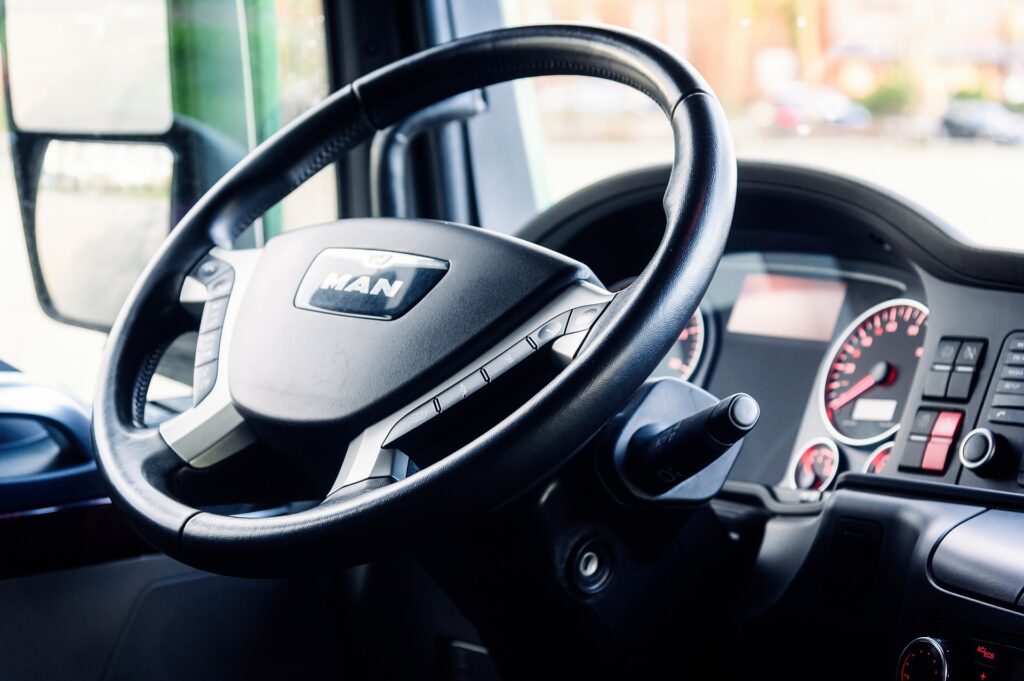
When running a business that uses a commercial fleet, there are many things to manage and focus on. Driver training is undoubtedly one of the areas where fleet managers need to focus their time. However, while some people may believe that driver training is only important when a new employee starts working for a business, this is not the case.

It is in a business’s best interest to continually keep driver training in mind and provide it to their employees should it be needed. There are many benefits to this, most notably improved safety for commercial drivers and other road users. When you hire a new driver using trucking company software you need to know that they are some of the best out there for your business, so consistent driver training can help them and you keep on top of the essential safety protocols.
But how can businesses continue to implement relevant driver training to those who need it? Using fleet tracking technology, businesses can gain a far greater understanding of their commercial vehicles, how they are being driven, and areas for improvement. Below are three different ways that businesses can use tracking technology to help improve their commercial driver training.
In-cab coaching
One of the big problems that businesses face is that they can struggle to monitor their drivers after the initial training period. It’s incumbent on business owners to trust their drivers to act responsibly when driving. Employers might want to provide employees with a custom id badge or uniform that conforms to business standards and ensures that they represent the company well. Also, the addition of systems that track their drivers’ behavior has helped fleet managers to make sure they are doing their jobs in a safe and professional manner.
In-cab coaching systems are a key part of this. These systems not only track how drivers are behaving behind the wheel, but they provide instant feedback in the form of audio and visual alerts. This feedback is crucial as it allows drivers to self-correct their own driving, in the same way that other drivers slow down when they see a sign telling them how fast they are going.
Drivers are alerted to actions that can be dangerous such as speeding, harsh cornering and sudden acceleration or braking. A study has found that by alerting drivers to these actions while behind the wheel, they are more likely to self-correct their own driving than those who did not receive instant feedback. This is, therefore, an effective way of implementing a form of driver training without organising a formal training session.
Reward and promote self-improvement
Alongside providing drivers with instant feedback based on their actions, these in-cab systems can also record the number of dangerous actions, such as speeding, and store it for analysis. Fleet managers can look at this data and then implement two forms of driver training to improve the way their drivers perform behind the wheel.
One of these forms of driver training is to make the data available to all commercial drivers within a company in a leader board style. By doing this, you can encourage those who may need to improve their performance to do so by making them aware of the areas where they could improve and how they could improve, compared to their colleagues. A good example of this could be to have a monthly or quarterly prize for the driver who used the least fuel or had the lowest number of harsh driving actions in a specific category.
By providing an incentive for commercial drivers and being transparent with their performance compared to their colleagues, businesses can encourage and develop better driving habits.
Individually developed training
The two forms of driver training mentioned above will not be the right approach to take for some commercial drivers. As in any industry, it is down to managers to identify the best ways to improve their employees’ performance.
Thanks to driver tracking, fleet managers can see in great detail the areas where each driver could improve. This could be how harshly they accelerate or if they leave their engine idling for too long, which can significantly increase fuel usage. Fleet managers can then design specific training programs to help individual employees improve in these areas. Another benefit of using driver tracking systems is that fleet managers can see exactly how effective this training has been by the results which follow it. Additionally, some fleet management solutions, such as electronic logging devices, can also be helpful for fleet managers to see how long each driver has left on their drive and their exact location. Managers can get additional info here on ELDs. This should increase safety for truck drivers.
Overall, by using fleet tracking technology to monitor commercial drivers’ performance within a fleet closely, businesses can better identify drivers who may require further or alternative training. This may only be one driver, or it could be a large proportion of a commercial fleet. Regardless of how many drivers require training, businesses must make them aware that tracking systems are there to help them and not simply keep a closer eye on them like Big Brother.
